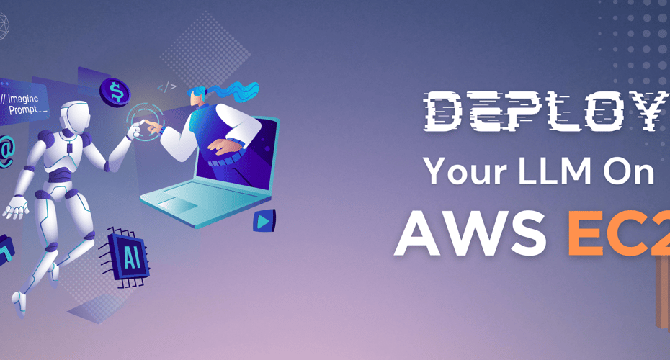Dev
2M
326

Image Credit: Dev
Deploy Your LLM on AWS EC2
- In order to deploy your own Large Language Model(LLM) you need a lot of computing power. deploying it on AWS is a good alternative. AWS offers a flexible, cost-effective way to harness the power of LLMs without investing in expensive GPUs.
- Large Language Models (LLMs) require GPUs with varying capabilities for inference and fine-tuning. AWS instances like g4, g5, p3, and p4 are the latest generation of GPU-based instances that provide the highest performance for deep learning and high-performance computing (HPC).
- You can reduce the memory footprint by employing quantization techniques. For instance, quantizing the model to 4 bits reduces the GPU memory requirement to approximately 3.5 GB.
- To deploy an LLM application on AWS, you need to know which Instance Types to choose, which depend on the size and complexity of your Model parameters.
- A step-by-step guide for deploying your LLM-based application includes Creating an instance, Configuring your EC2 instance, Defining inbound rules for running a Streamlit application, Installing Python dependencies, Cloning repositories from GitHub, Creating a virtual environment, and finally, running the LLM application.
- streamlit runs applications on port 8501 which needs to be defined in inbound rules so that other systems can access your application.
- To ensure the installed libraries work properly without conflicts with system-wide Python packages, you need to install python3-venv, create a virtual environment, and install all the dependencies using the requirements.txt file.
- For running the application, run command "python3 -m streamlit run app.py" in the streamlit application repo's directory. To keep the application running even if you lose the terminal session, use the command "nohup python3 -m streamlit run app.py".
- By following this guide, you’re now equipped to deploy your own LLM-based application, making it accessible and scalable. This guide allows you to make your applications on the cloud efficient.
- This guide offers many references including https://aws.amazon.com/ec2/instance-types/,https://docs.aws.amazon.com/ec2/index.html, and https://docs.streamlit.io/.
Read Full Article
19 Likes
For uninterrupted reading, download the app